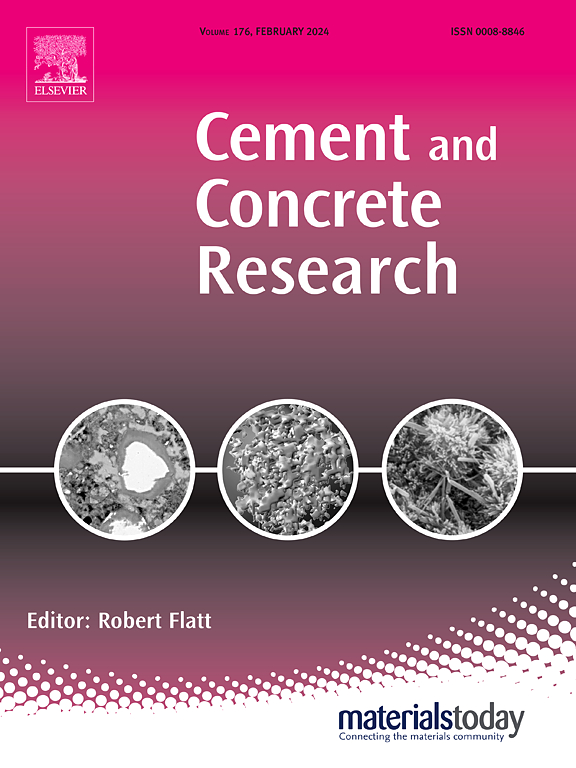Impact of calcination time on metakaolin morphology and enhancement of pozzolanic reactivity: Insights from in situ TEM
IF 13.1
1区 工程技术
Q1 CONSTRUCTION & BUILDING TECHNOLOGY
引用次数: 0
Abstract
Metakaolin reactivity is a function of both the calcination temperature and time. While significant literature exists on temperature-induced changes, studies on the time parameter are limited. Especially, what happens at the particle scale during calcination is unknown. Here, we shed light on this issue by observing kaolin particles on a live heated stage via in situ TEM. We find that individual kaolin particles undergo a layer thinning of ~15 nm as well as an area reduction of 2–5 %. R3 tests reveal an enhancement in reactivity as a function of calcination time (10 to 40 min of calcination leads to an increase of 850 to 950 J/g in 7d cumulative heat). These two phenomena - the morphological changes and the reactivity test results follow a similar exponential trend, which saturates at ~40 min. These results suggest that prolonged calcination times impact particle morphology, which has a strong correlation with clay reactivity.
煅烧时间对偏高岭土形态和火山灰反应性增强的影响:来自原位透射电镜的见解
偏高岭土的反应性是煅烧温度和时间的函数。虽然有大量关于温度引起的变化的文献,但对时间参数的研究却很有限。特别是,在煅烧过程中,颗粒尺度上发生的情况是未知的。在这里,我们通过原位透射电镜在现场加热阶段观察高岭土颗粒来阐明这个问题。我们发现单个高岭土颗粒经历了~15 nm的层变薄,面积减少了2 - 5%。R3测试表明,反应性随煅烧时间的增加而增强(煅烧10至40分钟导致7d累积热量增加850至950 J/g)。这两种现象-形态变化和反应性测试结果遵循相似的指数趋势,在~40 min达到饱和。结果表明,煅烧时间延长会影响颗粒形态,而颗粒形态与粘土的反应性密切相关。
本文章由计算机程序翻译,如有差异,请以英文原文为准。
求助全文
约1分钟内获得全文
求助全文
来源期刊

Cement and Concrete Research
工程技术-材料科学:综合
CiteScore
20.90
自引率
12.30%
发文量
318
审稿时长
53 days
期刊介绍:
Cement and Concrete Research is dedicated to publishing top-notch research on the materials science and engineering of cement, cement composites, mortars, concrete, and related materials incorporating cement or other mineral binders. The journal prioritizes reporting significant findings in research on the properties and performance of cementitious materials. It also covers novel experimental techniques, the latest analytical and modeling methods, examination and diagnosis of actual cement and concrete structures, and the exploration of potential improvements in materials.
 求助内容:
求助内容: 应助结果提醒方式:
应助结果提醒方式:


